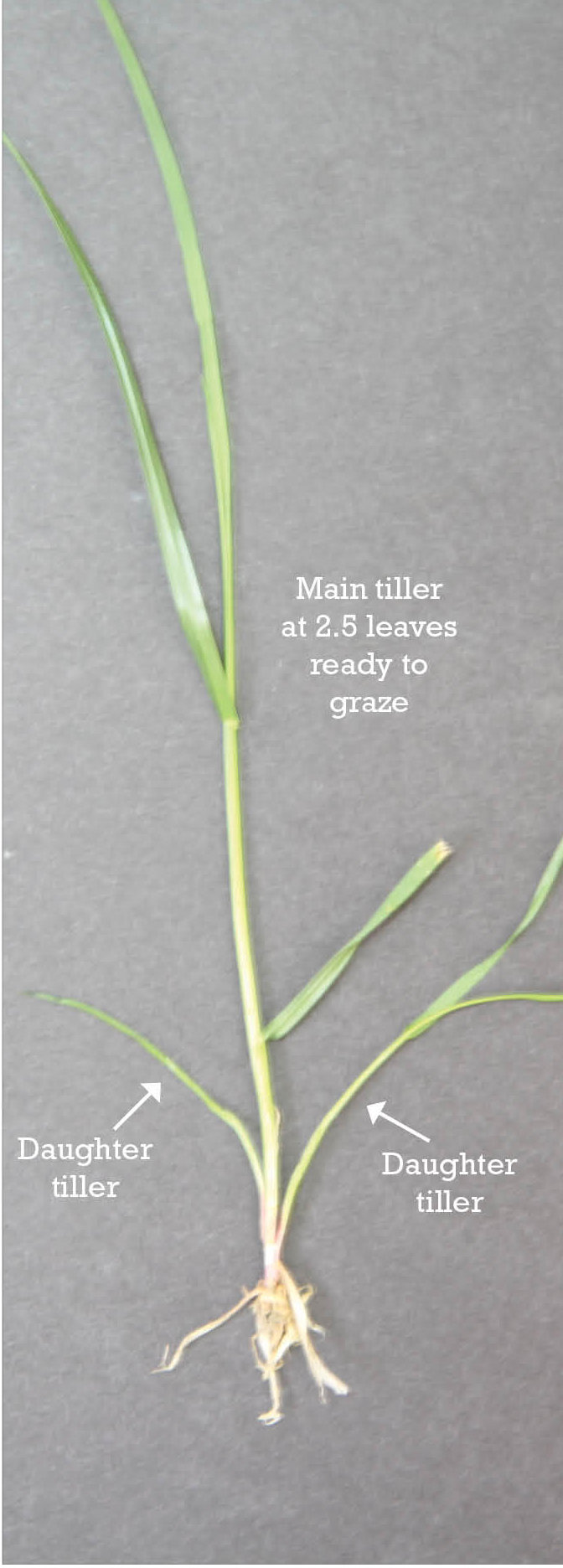Give it a nip
The very first grazing of a newly sown perennial pasture is arguably the most important of its whole life.
This achieves two things that are essential for young plants to flourish – it encourages newly emerged ryegrass seedlings to tiller, and it lets light down to reach clover seedlings.
The more tillers new ryegrass plants form in their first year, the stronger, more resilient and more productive they will be in the future.
Clover starts the pasture establishment process at a disadvantage, because it is a smaller plant, naturally slower to germinate than ryegrass.
Nipping off the tips of ryegrass plants early not only helps level the playing field by reducing competition, but also allows vital sunlight into the base of the pasture where the clover seedlings are trying to get cranking.
Without this, they are very vulnerable to being shaded out, which leads to weak clover growth and even death.
Time the first grazing for when ryegrass seedlings can’t be plucked out of the ground between finger and thumb; use young stock whenever possible; avoid wet conditions; and don’t let them graze too low.


